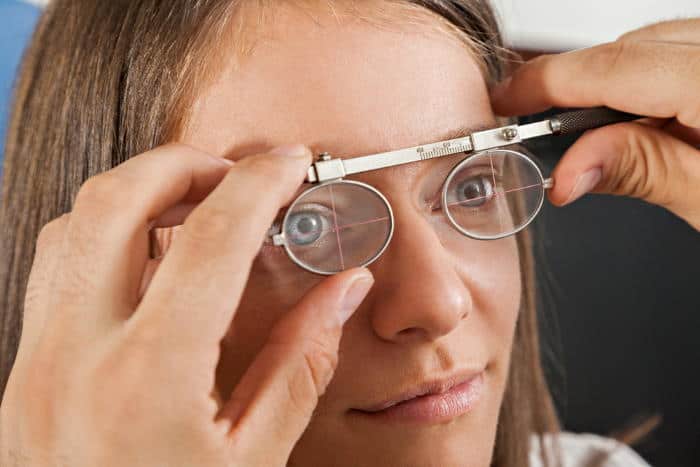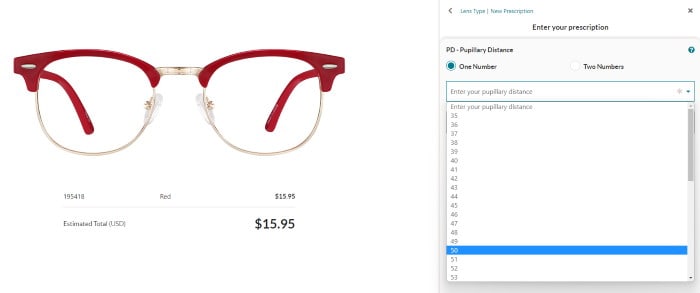If you’ve ever ordered prescription glasses online, you probably know that along with your prescription, you need to provide your pupillary distance, or PD. But what happens if your PD isn’t measured accurately? Does it have to be exact, or is there some wiggle room?
Here’s what you need to know about your PD and how important it is for getting a good fit for your new glasses.
(This page contains affiliate links. OGR may receive compensation if you click a link and make a purchase.)
What Exactly Is Your Pupillary Distance?

Pupillary distance is the amount of space between your pupils measured in millimeters. It’s important for glasses wearers because it helps determine where the optical center of each lens should be so you can see clearly without strain or visual distortion.
How Is Pupillary Distance Measured?
There are a few different ways that your pupillary distance measurement can be obtained. The most common (and best) method is for your eyecare professional to use a ruler or a pupillometer, which is a special instrument that helps to measure the distance between your pupils.
Another way to measure your PD is the “selfie method.” This can be done by taking a photo of yourself from about 12 inches away and then measuring the distance between your pupils using an online ruler tool or a ruler on your smartphone screen.
Average PD Measurements

Now that you know what pupillary distance is, you might be wondering what a “normal” PD measurement is. According to Rx Safety, the average pupillary distance for an adult ranges between 54-68mm, while children usually fall between 41-55mm.
Men also typically have a higher PD than women.
In actuality, your PD isn’t a static number either. It changes based on the distance between you and the object you’re looking at: If you’re looking at something close up, your pupils move closer to each other, resulting in a smaller PD measurement than if you’re looking at something far away.
Thus, your PD might vary depending on whether you wear glasses for reading or distance-viewing. You’ll want your near PD for reading glasses and your far PD for glasses that help you view things clearly in the distance.
Near PD is around 3mm less than your far PD.
How Accurate Does PD Have To Be?
Generally speaking, if your distance prescription power is low (i.e. less than -2.00), you can tolerate a small discrepancy in your PD. Up to a couple of millimeters off will not be too noticeable, as it’s about a 1mm discrepancy for each eye.
If you have a strong prescription, however, or if you have astigmatism, having a precisely measured PD is key to getting the clearest vision possible and avoiding discomfort. A PD that’s even a single millimeter off can cause headaches, dizziness, and distorted or blurry vision.
Single PD vs. Dual PD

If you’ve tried ordering prescription glasses online, you may encounter the option to input your PD as a single numerical value, or as two separate measurements.
Your pupillary distance can be measured in two ways: as a single value (binocular), or as two separate measurements for each eye (monocular or dual PD).
A binocular PD is simply the distance between your pupils when looking straight ahead and is expressed as a single number (for ex: “60”).
Dual PD measures each eye separately and is typically written as “30/32” (for example), where the first number represents the distance between your right eye to your nose bridge, and the second the distance from your left. It’s more accurate since people don’t always have a symmetrical face.
How To Measure Your PD
If your current prescription doesn’t already include your PD, there are a few options for getting it.
The most accurate way is to visit an eye doctor or other eyecare professional and have them measure your PD for you.
Otherwise, you can also measure it yourself at home with a ruler or with an online PD tool.